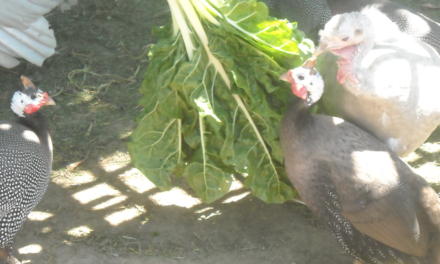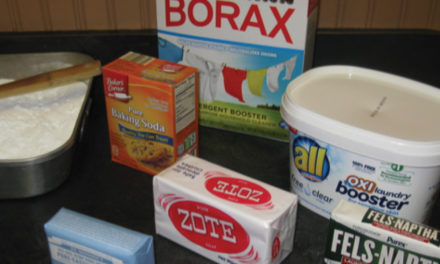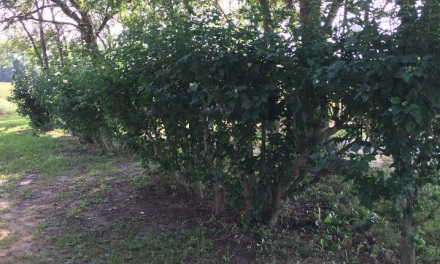Fresh asparagus steamed with clarified butter, tender raw asparagus in a salad, asparagus stir-fry, lemon roasted asparagus – you get the idea. Asparagus is delicious. The worst part of raising asparagus is prepping a trench for the bed. It is not glamorous, but it is worth the work to reap the benefits of a properly planted bed for the next twenty years. The secret is investing the time to lay a lasting foundation for the asparagus. I’ve written other blogs on asparagus, but I already established my beds. I’m excited to show you how to plant one.
A well-drained site, adequate sunlight, and protection for wind shear are essential. I chose a slight slope that will cause the plants to warm in spring at a staggering pace to extend my harvest. I am planting Jersey Giants and Purple Passion which is a cultivar that produces purple spears with a mild nutty flavor. I am experimenting by overseeding the sides of the beds with seeds of Martha Washington, an heirloom variety.
 This site has one major drawback; it’s close to the field where chemicals are sprayed. I will plant a barrier hedge to prevent damage to the delicate frons.
This site has one major drawback; it’s close to the field where chemicals are sprayed. I will plant a barrier hedge to prevent damage to the delicate frons.
First, Jim used our “Pony” to till the surface. We moved the loosened dirt to the sides of our trench. On to the backbreaking part, the ditch needed to be no less than 18 inches deep. Most experts only recommend a depth of 12 inches, but I like to set the roots slightly deeper.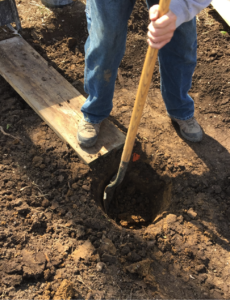
Here is where we veered off from standard practice, reference books say to dig a massive trench. We physically couldn’t do it so instead Jim dug each hole 18 inches deep only to the width needed for the root. We will see if this works.
After Jim dug the 20” hole, we back-filled with 6 inches of our best compost. One of the most critical steps is setting the root.
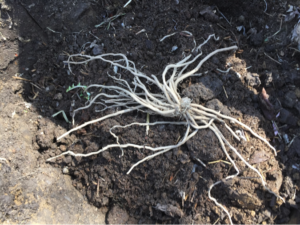 The trick is to prevent any air pockets around the root. To do this, build up a cone of dirt upon which you place the root. Make sure you mix in the compost with the loose soil and set the root firmly upon your mound of dirt. After I checked the roots for any mold or damaged ends which I removed, I soaked the roots right before I planted. Center the crown (the middle of the plant) on the top of the cone and spread out the roots. Gently cover the entire plant with compost and dirt. Leave the trench two-thirds uncovered to slowly backfill the hole as the asparagus develops. A newer method is to fill in the trench.
The trick is to prevent any air pockets around the root. To do this, build up a cone of dirt upon which you place the root. Make sure you mix in the compost with the loose soil and set the root firmly upon your mound of dirt. After I checked the roots for any mold or damaged ends which I removed, I soaked the roots right before I planted. Center the crown (the middle of the plant) on the top of the cone and spread out the roots. Gently cover the entire plant with compost and dirt. Leave the trench two-thirds uncovered to slowly backfill the hole as the asparagus develops. A newer method is to fill in the trench.
Hope you are inspired to plant a bed. Be Blessed! Ann May


